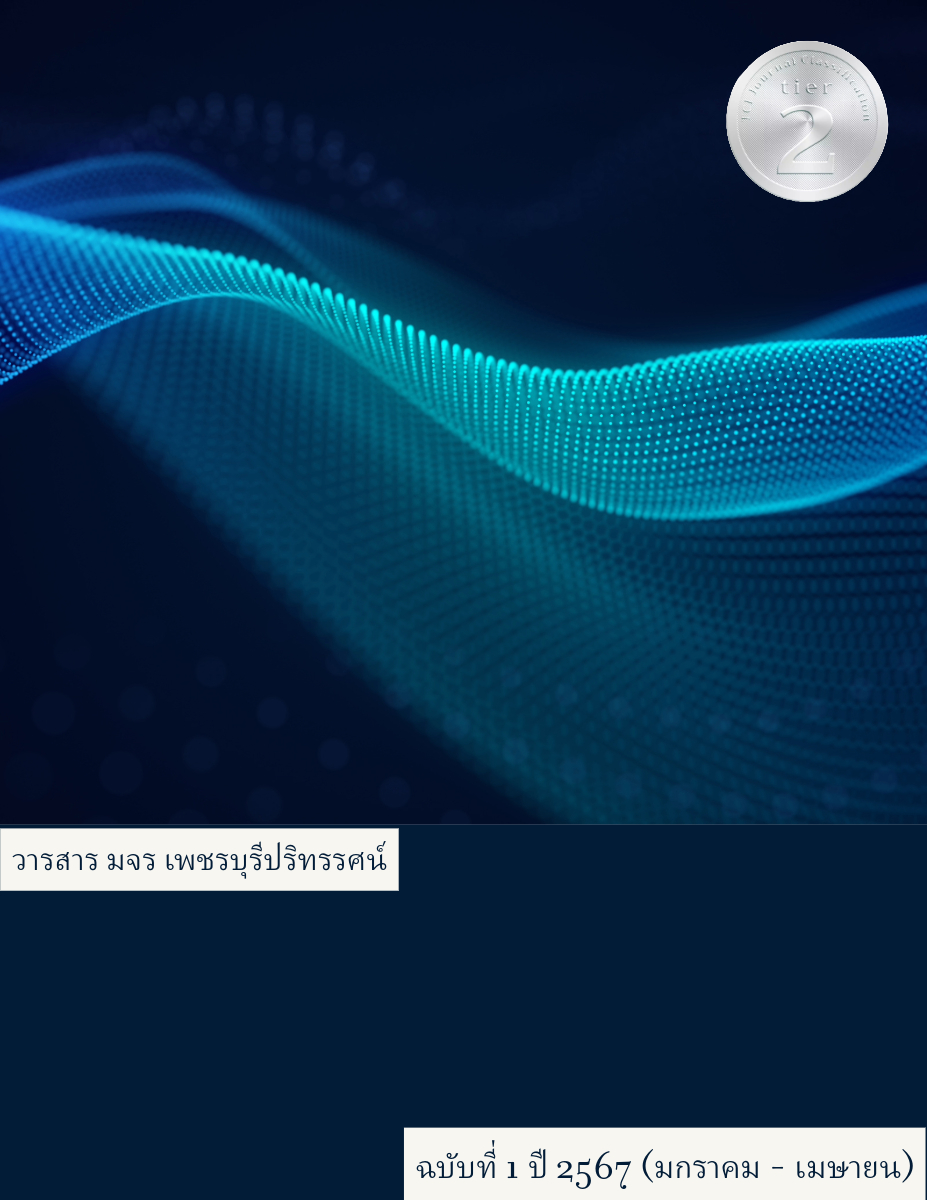Using a unique sculpture of contemporary creativity in order to Promote tourism in Chao Samran Beach, Phetchaburi.
Main Article Content
Abstract
Works of art could be described as the result of creative process, in other words, it could be mentioned as the process of creative production associated with space and environmental aspects which might be resulted in specific valuable artworks satisfying local requirement in terms of element of art and aesthetic completion.
In present day, even though, contemporary art are mainly created in order to answer psychological response, but after finishing, artworks perhaps were found stored in galleries or places without logical or right consideration. General speaking, artwork keeping might not be procedure properly based on its value and the context of that particular area.
The sculpture titled "Joyful & Pleasant" was the result conducted within creative research representing its meaning related to 0balance between the sculpture and the environment. In addition, the use of forms that designed through local context research and its analysis and synthesized process associated with aesthetical consideration.
Moreover, sculpture "Joyful & Pleasant " was also created in order to promote and enhance landscape at Chao Sam Ran Beach Intersection, Phetchaburi within the process of perception and satisfaction evaluation by art veteran and site specific audiences. Therefore, it could be highlighted that through all related processes the sculpture was completed and valuable in terms of form and its relationships to local space or environment.
This research and creativity aimed to analyze and synthesize information related to local Chao Sam Ran Beach district, Phetchaburi which the finding stated that the process of sculpture creativity could not be done without consensus or agreement from local people. In other words, the process of artwork making had to procedure through the use of artist’s imagination and personal emotion paralleled with local citizen’s cooperation and satisfaction in terms of emotional aspect, the balance of sculpture and surrounded space or environment, and local stories or background.
In summary, there would be not only local community’s satisfaction which the concept and title of sculpture could provide and answer the local area name as “Chao Sam Ran” which means “the area of happiness”, but also there was the balance between the form of sculpture and local landscape and its environment which could improve the atmosphere and scenario of specific site, Chao Sam ran Beach Intersection, and eventually resulted in the local identity or landmark.
Furthermore, the finding also highlighted that “Joyful & Pleasant” Project successfully completed and contributed the community in terms of local landscape reimaging alongside with repositioning and enhancing the status of art and its acknowledgement within the community through the use of sculpture and its value, aesthetical representation.
On the other hands, not only this site-specific sculpture project provided the knowledge and raised the degree of art appreciation and happiness to local, but there constantly would be the contribution to other art practitioners and related party who interested art making process, especially sculpture and the understanding of balance between art and environment.
Keyword: Contemporary, Promote tourism, unique
Article Details

This work is licensed under a Creative Commons Attribution-NonCommercial-NoDerivatives 4.0 International License.
References
กมล ทัศนาญชลี. (2524). ไทยอาร์ตเซนเตอร์. โลกศิลป์.
แคลวิน ทอมกินส์. (1984). ศิลปะกับสถาปัตยกรรม. เสรีภาพ 63. ม.ป.ท. : ม.ป.พ.
ชลูด นิ่มเสมอ.(2531). องค์ประกอบของศิลปะ. กรุงเทพฯ: ไทยวัฒนาพานิช จำกัด.
ชาญณรงค์ พรรุ่งโรจน์.(2548). การวิจัยทางศิลปะ. (พิมพ์ครั้งที่ 2). กรุงเทพฯ: จุฬาลงกรณ์
มหาวิทยาลัย.
ชาย โพธิสิตา.(2552). ศาสตร์และศิลป์แห่งการวิจัยเชิงคุณภาพ. (ปรับปรุง พิมพ์ครั้งที่ 4).
กรุงเทพฯ:อมรินทร์พริ้นติ้ง.
ถนอมจิตร์ ชุ่มวงศ์. (2548). ประติมากรรมสาธารณชน. สวนประติมากรรมเฉลิมพระเกียรติ
สมเด็จพระเทพรัตนราชสุดาฯ สยามบรมราชกุมารี เนื่องในโอกาสทรงเจริญ
พระชนมายุ 50 พรรษา. กรุงเทพฯ :อมรินทร์พริ้นติ้งแอนด์พับลิชชิ่ง.
ทวีเดช จิ๋วบาง. (2537). ความคิดสร้างสรรค์ศิลปะ. กรุงเทพฯ : โอเดียนสโตร์.
ธนภัทร รุ่งธนาภิรมย์. (2557). ทฤษฎีความงาม. กรุงเทพฯ:โรงพิมพ์แอทโฟร์พริ้นท์.
นนทิวรรธน์ จันทะนะผะลิน. (2546). ความเคลื่อนไหวของสมาคมประติมากรไทย. มหกรรม
ประติมากรรมขนาดเล็ก. ม.ป.ท. : ม.ป.พ.
สุชาติ เถาทอง. (2553). การวิจัยสร้างสรรค์ทัศนศิลป์.ชลบุรี: คณะศิลปกรรมศาสตร์มหาวิทยาลัย
บูรพา.
สุชาติ เถาทอง. (2556). สหวิทยาการ:การวิเคราะห์หาความเชื่องโยงแบบบูรณาการทางศิลปะ.ชลบุรี: คณะศิลปกรรมศาสตร์มหาวิทยาลัยบูรพา.
สุชาติ เถาทอง. (2559). ศิลปวิจัยสร้างวิชาการแบบการปฏิบัติสร้างสรรค์ศิลปะ. ชลบุรี: คณะศิลปกรรมศาสตร์มหาวิทยาลัยบูรพา.
อารี สุทธิพันธุ์. (2551). ผลึกความคิดศิลปะ. กรุงเทพฯ: มหาวิทยาลัยศรีนครินทรวิโรฒ.
Duane & Sarah, Preble. (1978). Artforms. New York: Hasper & Row.
Fichner Rathus, Lois. (1989). Understanding Art. New Jersey: Prentice-Hall.
Faraut, Philippe. (2006). Sculpting Workshops and Classes. Retrieved Fabuary 20,
, from: http: //www.philippefaraut.com/workshops.htm.
Gilbert, Rita. & Mc Carter, William (1988). Living with Art. New York: Alfred A. Knopf.
Govignon, Brigitte. (1995) .The beginner’s guide to Art. New York: Harry N. Abrams,
IncPublishers.
Hunter, Sam & Jacobus, John. (1985). Modern Art. New York: Harry N. Adrams.
Roots, Garrison. (2002). Public Art. Mulgrave. Vic. Australia: Images Publishing.


